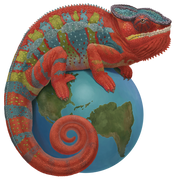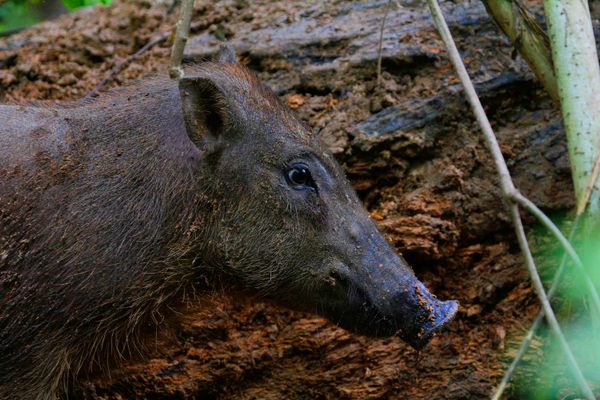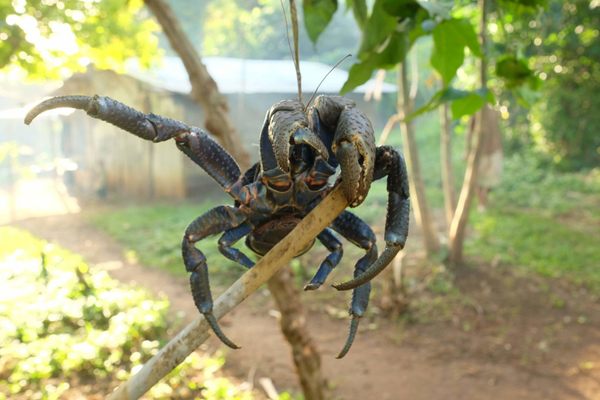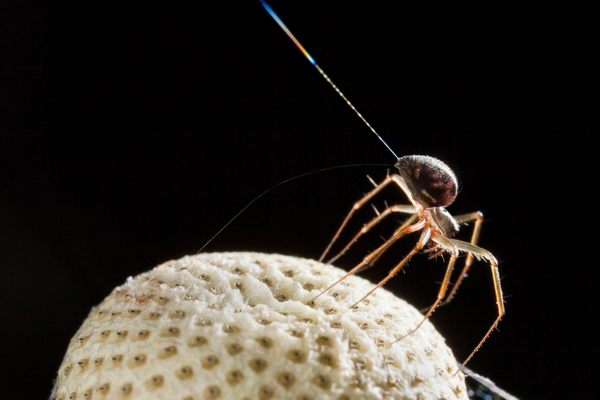Are Bristlecone Pines Really Immortals Living Among Us?
These scrappy and squat high-elevation trees can live for thousands of years without seeming to age.
Each week, Atlas Obscura is providing a new short excerpt from our upcoming book, Wild Life: An Explorer’s Guide to the World’s Living Wonders (September 17, 2024).
The world’s oldest known trees aren’t outwardly impressive. The most famous, nicknamed Methuselah, has lived quietly in the White Mountains of California for an estimated 4,850 years, ignoring the rise and fall of civilizations and growing very, very slowly. From the outside, “it’s a disappointing tree, to be honest,” says Brian Smithers, an ecologist at Montana State University, who describes the ancient organism’s form as “somewhere between a shrub and a tree.”
Inside, however, marvels are occurring. Methuselah and other Great Basin bristlecone pines have found ways to handle pretty much all of life’s ravages—and maybe even time itself.

Methuselah’s underwhelming appearance is the result of a successful life strategy. Great Basin bristlecones root in thin limestone soils at elevations up to about 10,000 feet (3,048 meters), where they face temperature extremes, drought, and raging winds. To cope, they conserve energy. Unlike big, hunky trees like sequoias, which in their youth can pack on an inch of trunk diameter per year, Great Basin bristlecones often add less than a millimeter. (In dry years, they might not grow at all.) This slow growth results in dense wood that can withstand wind and insects. Their gnarled, squat forms help them weather storms, and they can even sacrifice parts of their body when times are hard, letting one section of roots and shoots die while the rest of the tree lives on.
Bristlecones’ endurance is encoded deep within. Individuals of most species on Earth decline physiologically over time, as our cells accumulate damage and eventually die in a process called senescence.
But bristlecones—along with a handful of other trees, including species of juniper, ginkgo, and redwood—might not experience senescence. Instead, their cells continue to perform as though they’re young and spry, even after thousands of years. For instance, while most tree types photosynthesize more slowly in old age, a bristlecone sapling and a 4,000-year-old elder are equally efficient at making food from sunlight. Even the oldest bristlecones make healthy inner bark cells that transport water and nutrients, produce viable seeds, and don’t have shortening chromosome tips—a common marker of biological aging.
So far, bristlecone immortality is hypothetical. Some researchers argue that very old trees do actually age—we just have yet to pin down what processes define their senescence. And despite their toughness, many ancient bristlecones still die from lightning strikes, drought, or insect attacks, all threats exacerbated by climate change.
They’re also not immune to twists of fate. In 1964, a geographer got a tool stuck in a Great Basin bristlecone and ended up asking a park ranger to fell it. That tree turned out to have been nearly 5,000 years old—killed, in the end, by its own humble appearance.
- Range: High elevations across the Great Basin region of the western United States, including the White Mountains of eastern California and western Nevada
- Major species: Great Basin bristlecone pine (Pinus longaeva)
- How to see them: Hike the trails near the Ancient Bristlecone Pine Visitor Center outside Bishop, California. The specific location of Methuselah is kept private to protect the tree, but the paths wind past numerous bristlecones 4,000 or more years old.
Wild Life: An Explorer’s Guide to the World’s Living Wonders celebrates hundreds of surprising animals, plants, fungi, microbes, and more, as well as the people around the world who have dedicated their lives to understanding them. Pre-order your copy today!






























Follow us on Twitter to get the latest on the world's hidden wonders.
Like us on Facebook to get the latest on the world's hidden wonders.
Follow us on Twitter Like us on Facebook